Is Baking Soda Or Powder Better For Making Cookies With?
Everything we learned about the differences between making cookies with baking powder versus soda. #BFChocolateChipCookie
Welcome to BuzzFeed's Best Chocolate Chip Cookie Guide. Over the past few weeks we've baked over 400 cookies — testing every possible variable from dough temperature to sugar variety in an attempt to find the best possible formula. You can get an overview of the entire experiment here.
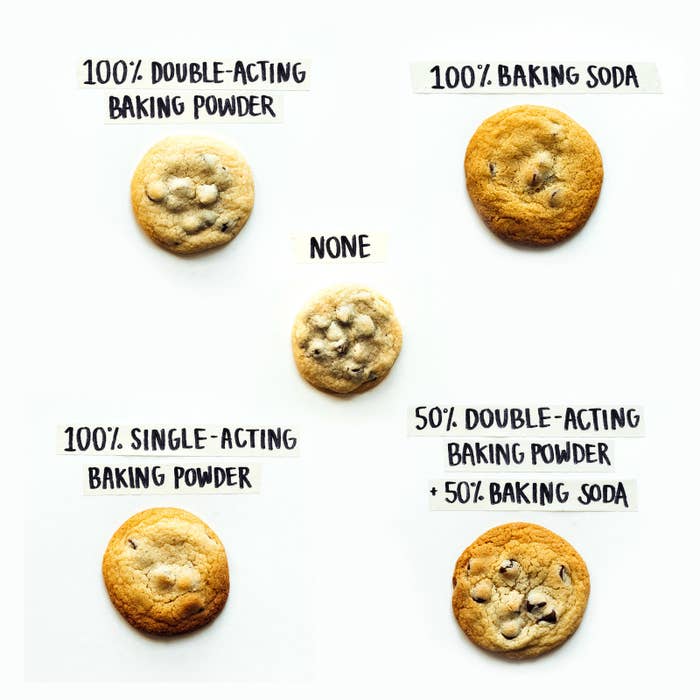
If you've baked cookies before, you know the utter joy of watching your cookies spread far and wide as the edges brown and crackle with delight. You also know the feeling of utter angst when your cookies simply refuse to rise or spread. The rise on your cookie, something that is decided exclusively in the confines of your blazing oven and can't be judged at the dough stage, is a welcome addition to the experience of consuming a chocolate chip cookie. So it's only fitting that we look at why our cookies rise in the first place.
It all comes down to leavening. In layperson's terms, leavening your cookie involves introducing air to the cookies and can happen in a multitude of ways. In cookie-land, you introduce leavening in a mechanical format when you cream butter and sugar together, but oftentimes the real leavening comes from a chemical agent. Most home cooks and professional chefs stick to the tried-and-tested methods: baking soda, baking powder, or a combination of both. So let's delve into what these products are made of and what the benefits or disadvantages are of them.
“Good cookies will usually combine leavening types for a balanced final product,” says Anna McGorman, director of culinary operations for Milk Bar. “Baking soda begins reacting in dough right away upon mixing, whereas double-acting baking powder gives you an additional hit — first when the ingredients are mixed together, and second as it hits the oven. Usually you need a bit of both to jump-start the leavening but also to carry you through the whole baking process,” says McGorman.
To better understand how leavening agents affect cookies, we decided to test five batches of cookies and compare them in a side-by-side taste test. We stuck to five of the most popular varieties and combinations of leavening agents that professional bakers swear by and kept all of the other variables the same. We used the classic Nestlé Toll House cookie formula as our base recipe and simply swapped out the leavening agent, keeping the quantity the same.
*Note: While eggs are important in the leavening process of many baked goods, the incorporation of whole eggs has been kept constant across our trials and they are not being treated as primary leavening agents for the purposes of our recipe.
If you can't see the sign-up box above, just enter your email address here.
Here are the five leavening agents we tested and how they affected the cookie:
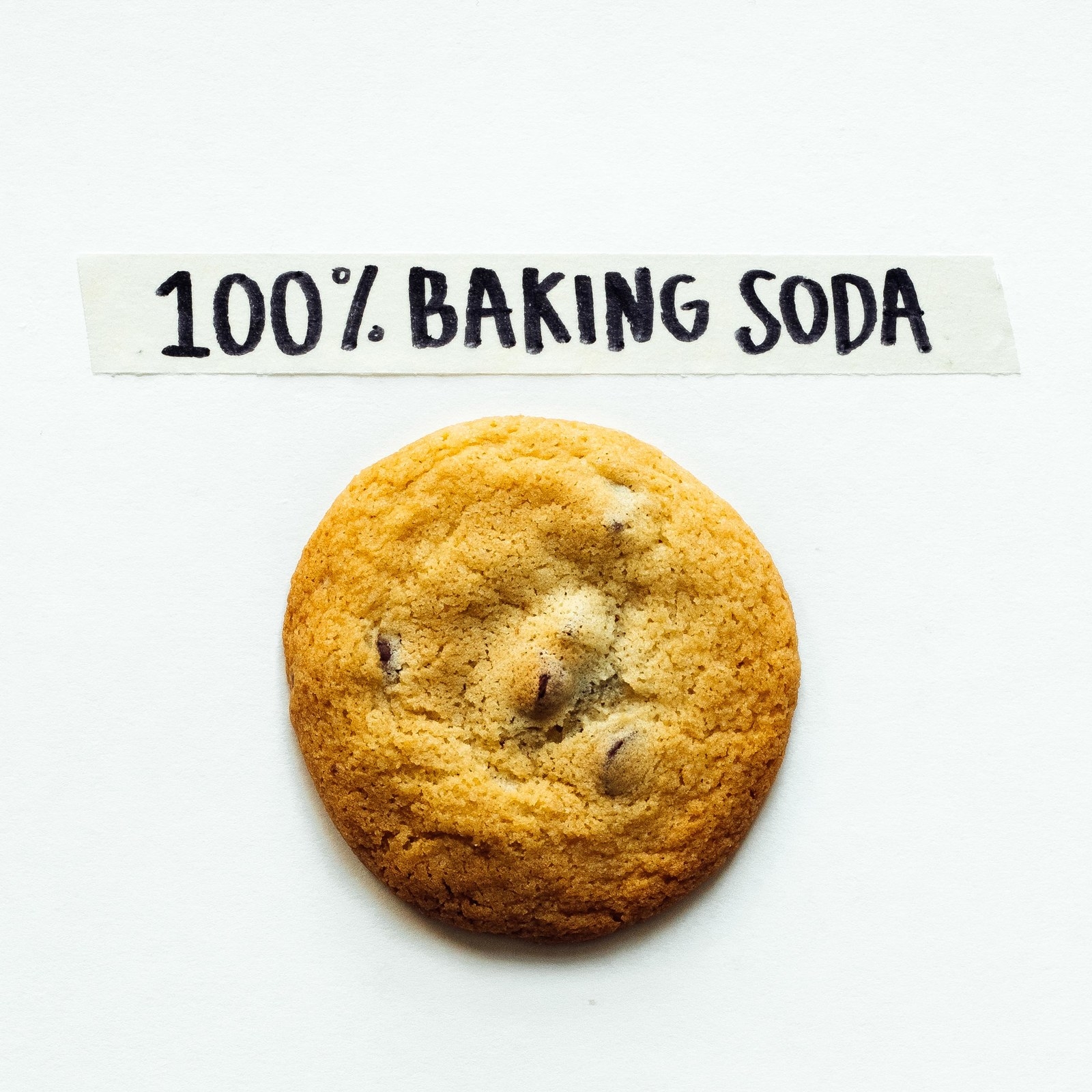
The science: Baking soda is sodium bicarbonate (a pure base). During the cookie making process, the baking soda is dissolved into free water molecules as your creamed butter melts in the oven, expanding the cookie. This compound then segregates into sodium, water, and carbon dioxide when combined with an acidic component: in our case, the acid present in the brown sugar. What should result is a stable and reliable cookie that's not too puffy, yet not too crisp.
Given that this variation is our standard, it's safe to say baking soda is a pretty reliable way to produce a satisfactory chocolate chip cookie.
The test: Use 100% baking soda in the cookie recipe. (This is what is called for in the control recipe.)
The results: These were the standard chewy-yet-crisp chocolate chip cookies you’re familiar with. They had an average amount of spread, just the tiniest bit of lift, and were pleasantly browned and chewy. No surprises here!
Overall rating: 8/10
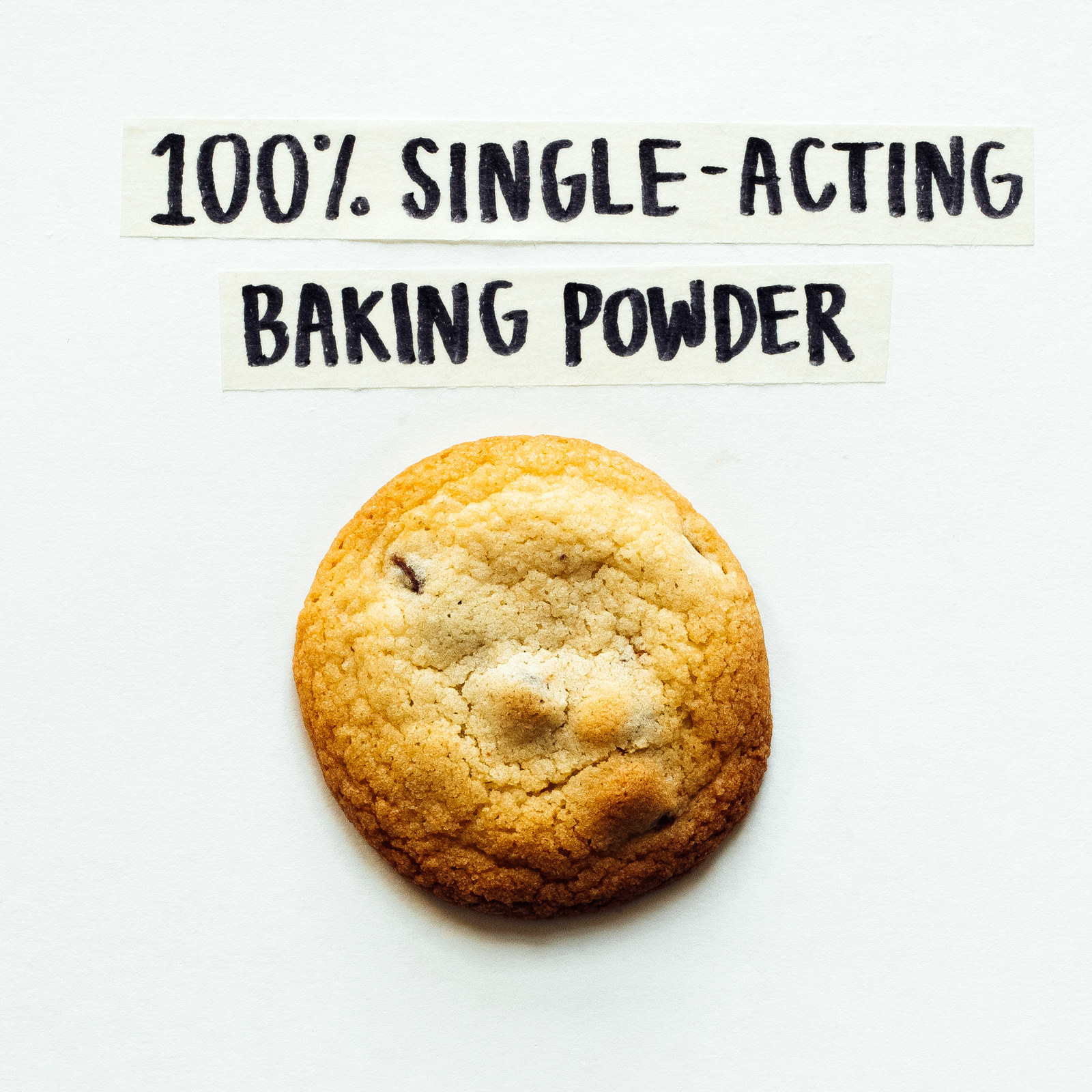
The Science / What We're Expecting: Not to be confused with the soda that we just broke down, baking powder is a beast of its own. Made with a combination of sodium bicarbonate (aka baking soda) and cream of tartar, baking powder may make your life just a bit easier because it already has an acid in it. If you're into puffy and cakey cookies, baking powder might become your new best friend.
But it's important to note that using whatever baking powder is lying around your house might not reproduce the results of this test. Why, you might ask? Most commercial baking powders are double-acting, meaning they don't start bubbling until heat is applied. However, in the case of single-acting baking powder, it starts forming bubbles as soon as it reacts with a liquid acid. Unless you're surfing through the Amazon archives, you probably won't even find single-acting baking powders.
The Test: Swap the 100% baking soda, originally in the recipe, for 100% single-acting baking powder. All other variables kept as-is.
The Results: These cookies were way cakier than we were hoping for. They had too much air in them and were not chewy at all.
Overall Rating: 3/10
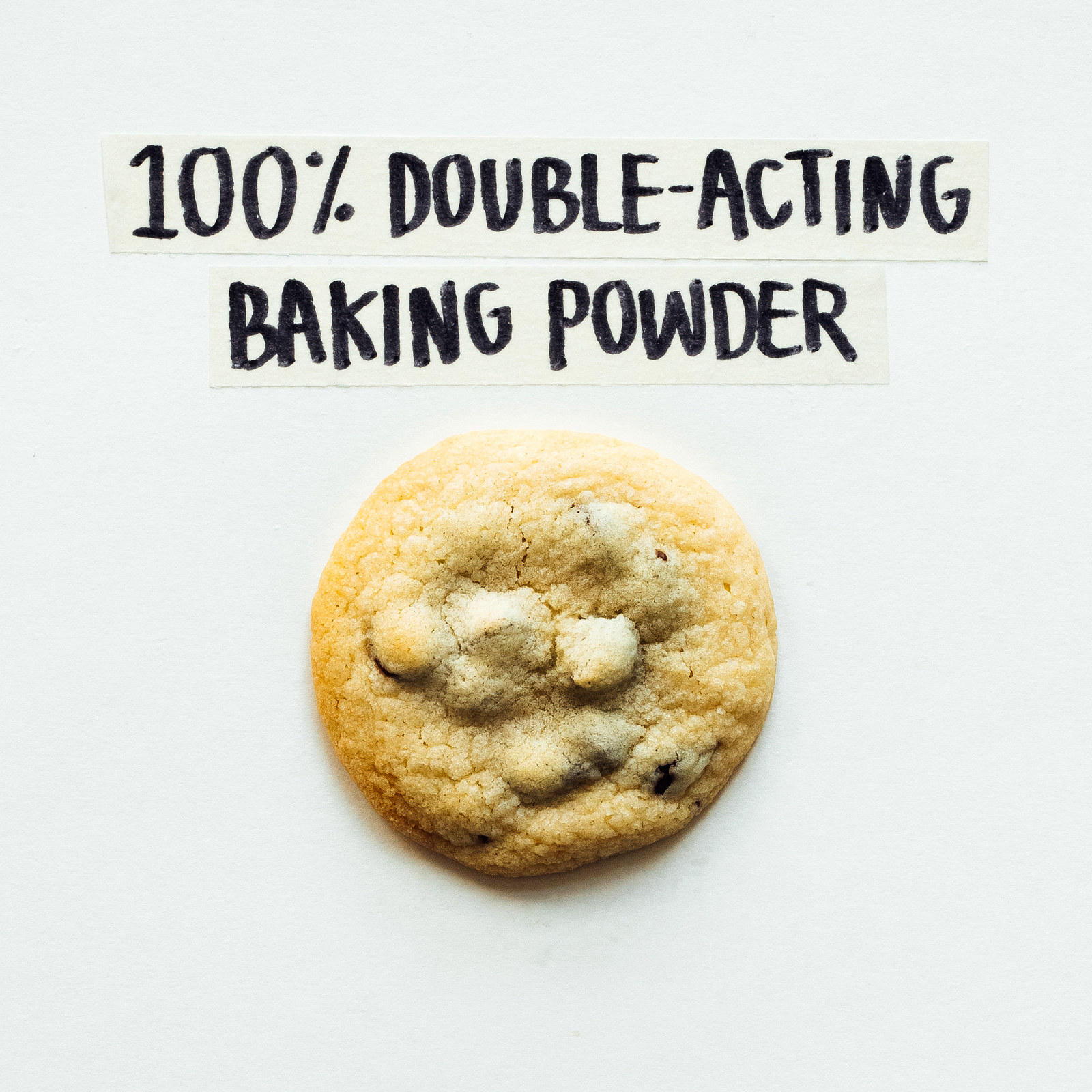
The science: Ahh, the true star of the show: double-acting baking powder. But what makes double-acting baking powder so special?
This baking powder comes with a special addition: sodium aluminum sulfate. It's the acid component and yet, because of its insolubility, this compound won't interact with sodium bicarbonate under a temperature of 140°F. Because of how finicky this acid compound is, leavening is only part of the process it induces. After being mixed into your dough, the acid takes on another form in your oven, right before the cookies seem like they're going to fall, collapse, and dash your hopes and dreams. Basically, it's a safety net, so it's no wonder that this baking powder has become ubiquitous in markets and kitchens across the US. Chances are, if you have baking powder in your cabinets, this is what it is.
The test: Swap the 100% baking soda, originally in the recipe, for 100% double-acting baking powder. All other variables kept as-is.
The results: These cookies looked very pale despite being baked for the same amount of time as all of the other batches. They didn’t spread very much and were overly cakey — not chewy in the least bit. If you love cakey cookies, this might be for you, but it definitely did not provide the texture we were hoping for.
Overall rating: 2/10

The science: So we've realized that each leavening agent (unsurprisingly) has its perks. However, each one also has its flaws. We also discussed that baking powder already has baking soda in it. So what's the point of using both if baking powder already has it? Isn't that, well, redundant? Well, that's for us to find out.
The test: Swap the 100% baking soda, originally in the recipe, for 50% baking soda + 50% double-acting baking powder. All other variables kept as-is.
The results: These cookies came out beautifully cracked and perfectly browned. Although they looked really beautiful, the texture was just a tad bit too cakey for our taste. The baking powder in addition to the soda provided too much lift and negatively impacted their chewiness. Although beautiful, this combo was not ideal.
Overall rating: 6/10
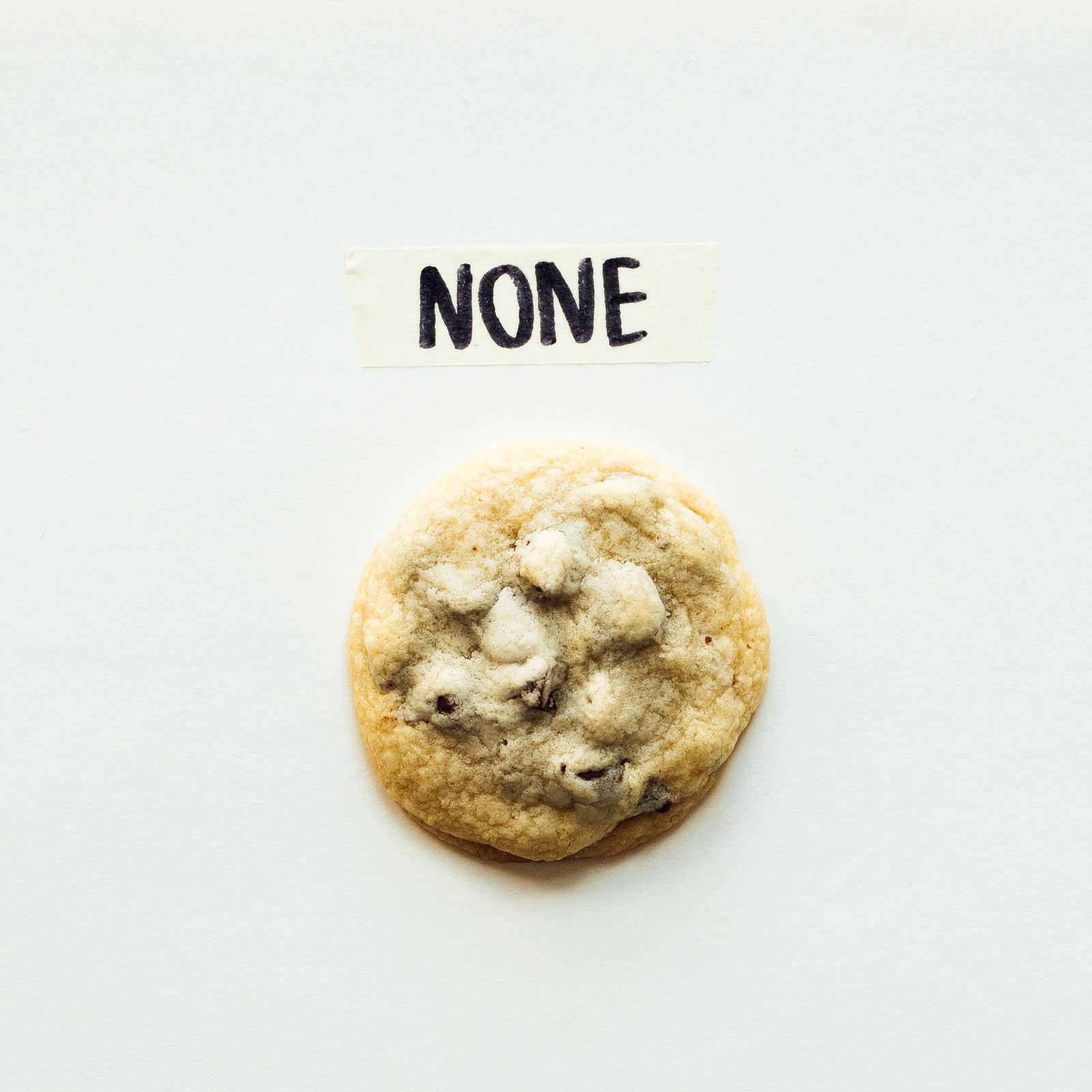
The science: Now, we know what you're thinking: Your cookies won't rise without leavening, Einstein. And you're right: For the most part, they won't.
The thing is, this is where eggs come into play. Some people whip egg whites to give their cookies natural leavening (think: meringue). However, that's not as applicable to a chocolate chip cookie as it might be to a delicate cake or soufflé.
If you're using whole eggs, you can count on a little lift from the white and a bit of richness from the yolk, but unless you mean to use this to leaven your cookies, chances are they won't be giving your cookies the lift they need (or deserve). This test is truly a toss-up.
The test: Remove the 100% baking soda, originally in the recipe, and do not replace. All other variables kept as-is.
The results: Despite being baked for the same amount of time as all of the other cookies we’ve tested, these turned out severely underbaked and pale. They were dense (in a raw cookie dough–type way) and didn’t spread or rise at all. Turns out you really do need a leavening agent in your cookie dough!
Overall rating: 0/10
The Biggest Takeaways:
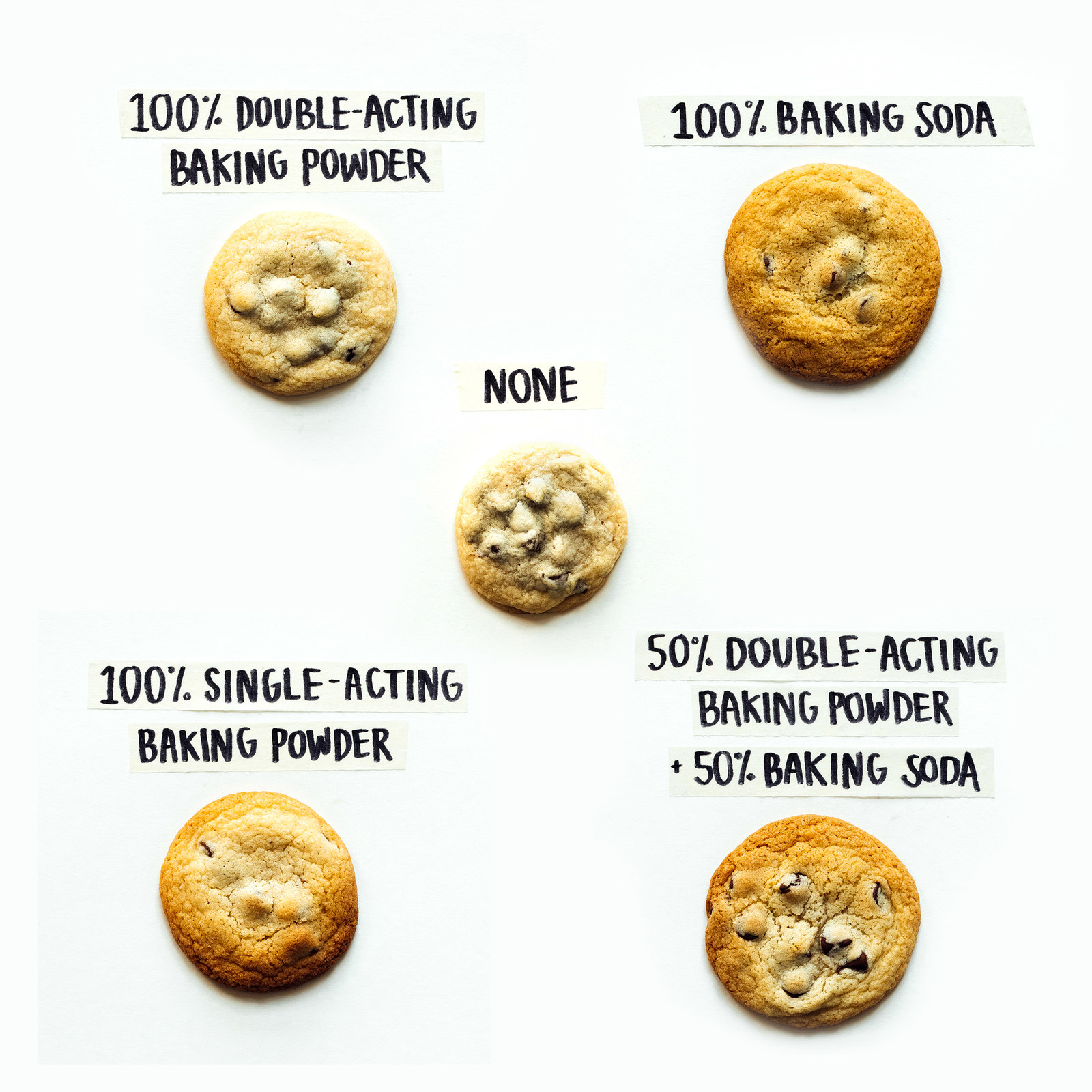
What we learned: Leavening agents determine the spread, rise, and cakiness of cookies. And surprisingly, they had a significant impact on the browning of the cookies as well — causing some of them to look underbaked and pale.
The biggest takeaways: When it comes to determining which leavener you should use in your chocolate chip cookie recipe, keep these things in mind:
1.Unless you want cakey cookies, avoid using baking powder: The cookies made with both the single- and double-acting baking powders were just too darn cakey.
2. Baking soda helps cookies spread more than baking powder. So if you prefer your cookies thin and wavy (versus domed and cakey), baking soda is most likely a better route for you. Just remember: Soda spreads, powder puffs.
3. The less leavener you use, the less cakey your cookies will be. But this doesn’t mean you should completely ditch your leaveners. Just look at the horrific cookie made with no leavening agent above...
4. Remember that brown sugar has a bit of acid in it. So it will react with the baking soda to leaven your cookies.
This post is part of BuzzFeed's Best Chocolate Chip Cookie Guide. To read through the entire guide, click through the links below:
Main Post | Sugar Type | Fat Type | Flour Type | Chocolate Type | Dough Age + Temperature | BuzzFeed's Best Chocolate Chip Cookie Recipe

